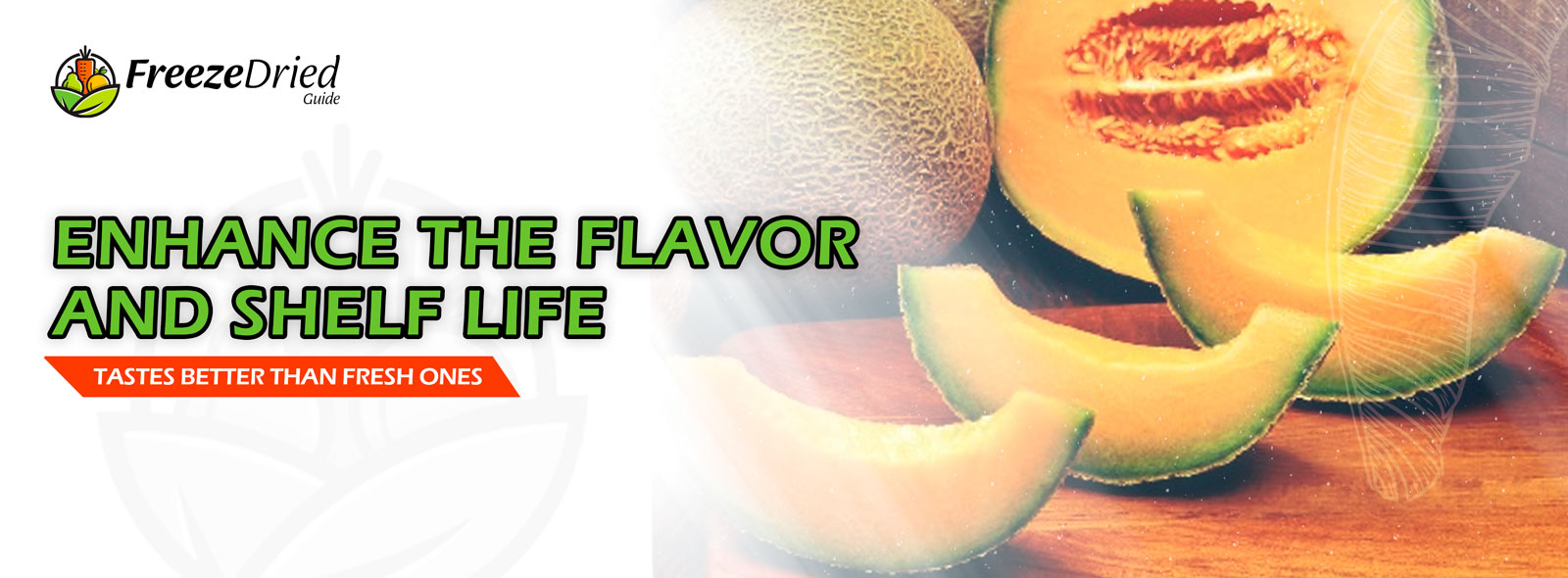Better Websites to own 2025
Jun 11, 2025

Cantaloupe is a wonderful, sweet fruit that you can enjoy for snacks, juices, and smoothies. Although it’s available all year round, it can be expensive to get during the winter months. If you love cantaloupe but don’t want to spend unnecessarily when it’s out of season, then try freeze-drying it.
Many hesitate to buy cantaloupe because it looks pretty intimidating, and with good reason. Unless you regularly buy the fruit, picking the sweetest and most flavorful one is like finding a needle in a haystack. But here are tips that can help you purchase cantaloupe and increase your chances of getting the right one for freeze-drying.
The best time to buy cantaloupe is during the spring. The warm spring weather helps the plant give moisture and sugar to the fruit until it’s ripe for picking.
A good cantaloupe has light tan skin with light green lines weaving across the surface. You should feel the ridges of those weaving lines when you touch the skin. Don’t choose one that has smooth, even skin or has brown, depressed spots.
A good, ripe cantaloupe should be heavy for its size. The fruit is rich with a sweetness that makes it perfect for freeze-drying.
See the stem core where the fruit was once attached to the plant? That portion should have a sweet, musky melon scent. If you can’t detect any smell or the fruit has a hint of sour scent, choose another one.
A good cantaloupe should be firm with a slight give to it. A hard cantaloupe is unripe, while a soft, wobbly one is overripe.
Also, check the stem, the same spot mentioned above. It should have a round, smooth, and slightly dented appearance. If you press it, it should have a slight give but should bounce back after pressing.

The first thing you need to do is to wash the fruits before processing them. The inedible skin can harbor microbial growth that can cause food-borne illnesses. No fancy washing, just running water and a firm-bristled vegetable brush. As the water flows, firmly brush every single inch of the skin. This will help make your tropical fruit safe to eat.
After washing, there are two ways to cut and prepare the fruit.
You can keep the fruit whole as you peel it. This method is easier for others, especially those not skilled in handling a knife.
This is how people usually process the cantaloupe.
You don’t have pre-freeze the fruit, especially if your freeze dryer’s free to use. But pre-freezing is a smart move if you have plans or your freeze dryer’s busy at the moment. This way, the food already has ice crystals that can make freeze-drying easier.
If you decide to freeze-dry, make sure the trays are also icy cold. Then set the chamber of your freeze dryer to pre-cool down to -8°F (-22 °C) or lower. This will keep the food from melting and make the process more efficient.

Got all your cantaloupe trays ready for freeze-drying? Then let’s load them up in your Harvest Right freeze dryer.
Depending on several conditions, freeze-drying cantaloupe can take 16-28 hours. It can take longer if you have a lot of food to freeze dry or if the weather is hot and humid. You’ll know that the fruit is done when it’s dry, crispy, and airy. When you bite into it, it will be bland at first but will explode in flavor when your saliva moistens it as you chew.
If any of the cantaloupes feels soft, cold, and moist, bring the trays back to
If you can’t get enough of the freeze-dried fruit, Mason jars are great storage compartments. They’re easy to open and reseal when necessary. There’s also a manual pump that can help you create a tight vacuum seal when you need it.
Mylar bags are excellent if you prefer to store the freeze-dried fruit for long-term storage or traveling. They’re inexpensive and easy to carry around without taking up too much space.
One crucial element in packing is oxygen absorbers. They take out residual oxygen left inside the empty space of your container. 1-2 packets of the 300cc volume are enough for every gallon size of your container. Replace your OAs each time you open the seal.
Keep the freeze-dried cantaloupe in a cool, dark place. The temperature should not go above 72°F (22 °C), and the relative humidity should be at 15% or less.
Those who’ve tried freeze-dried cantaloupe say it tastes better and sweeter. Even if you freeze-dry a slightly underripe one, the flavor will remain. Some prefer this because there’s less of the musty scent and taste others dislike about the fruit.
Where do you plan to buy your cantaloupe for freeze-drying? Let us know in the comment section.
Some freeze-drying preps can be challenging to visualize when described as text. That’s why we’re creating videos for visual learners who are serious about freeze-drying. Subscribe to our YouTube Channel and hit the bell so you’ll get notified when we upload new videos.